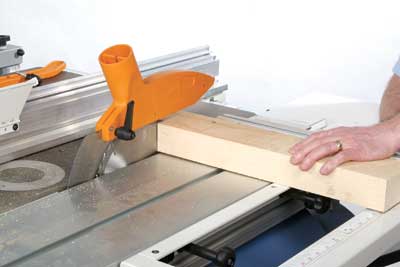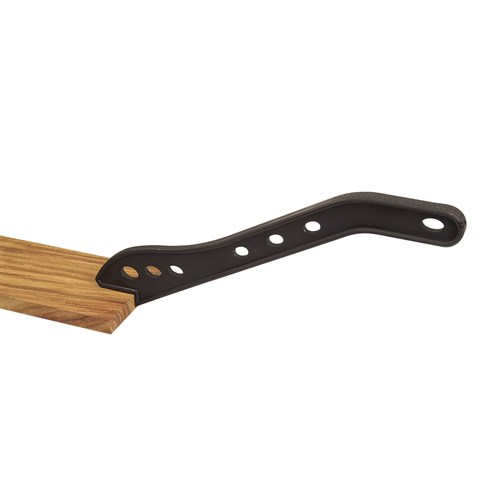Steve Maskery
Established Member
Jacob is mistaken, I have never filmed what can go wrong with an overarm (also called a SUVA-style) guard. I HAVE filmed how to make and use one, it's on my Tablesaw Safety DVD, which is part of my Tablesaw DVD set.. I'm not supposed to advertise, but you did specifically ask for a link about it.
I have a different view to Jacob. He is right about a RK-mounted one being more convenient and always there, but, as you are finding out, such an arrangement is restricting. A SUVA guard offers all the protection and greater flexibility regarding non-severing cuts.
The biggest challenge with SUVA guards is that of rigidity. Its mounting point is a long way away from where it is used and so it can easily waggle about. I don't like things waggling about on my TS, thank you very much. So my support arm is supported at TWO positions, the far RH corner of my TS and in a shoe mounted to the top of my fence. The boom arm rides in this shoe wherever the fence is set.
It has two lateral positions, centrally of the blade for 90 deg cuts, and a tad further over to the right for when the blade is canted over.
I think it is excellent and I wouldn't go back to the RK-mouted one, even if I still had it.
However, the event Jacob has in mind is not a film but a post after I had an accident with it.
However, this was not a fault with the design, it was because I had failed to ensure that it was adjusted correctly and secured. A loose RK guard could have done the same. It was user-error. Particularly embarrassing user-error, given my high-profile stance on TS safety, but user-error, nonetheless. And the accident happened in the presence of a Senior H&S Officer.....
There are some operations I do when even this guard is unsuitable, for example when I am using my tenon jig or deep-ripping, so I have a magnetic stand-alone guard which I can set right up to the workpiece and stops me getting my fingers too close. It would not prevent me falling onto the blade, though, which is a common cause of injury as people learn over to retrieve the workpiece, so I'm not suggesting that it would pass H&S approval. But I use it when the only other alternative would be not to use a guard at all. I NEVER use the TS totally unguarded and I try to persuade other people not to as well.
I have a different view to Jacob. He is right about a RK-mounted one being more convenient and always there, but, as you are finding out, such an arrangement is restricting. A SUVA guard offers all the protection and greater flexibility regarding non-severing cuts.
The biggest challenge with SUVA guards is that of rigidity. Its mounting point is a long way away from where it is used and so it can easily waggle about. I don't like things waggling about on my TS, thank you very much. So my support arm is supported at TWO positions, the far RH corner of my TS and in a shoe mounted to the top of my fence. The boom arm rides in this shoe wherever the fence is set.
It has two lateral positions, centrally of the blade for 90 deg cuts, and a tad further over to the right for when the blade is canted over.
I think it is excellent and I wouldn't go back to the RK-mouted one, even if I still had it.
However, the event Jacob has in mind is not a film but a post after I had an accident with it.
However, this was not a fault with the design, it was because I had failed to ensure that it was adjusted correctly and secured. A loose RK guard could have done the same. It was user-error. Particularly embarrassing user-error, given my high-profile stance on TS safety, but user-error, nonetheless. And the accident happened in the presence of a Senior H&S Officer.....
There are some operations I do when even this guard is unsuitable, for example when I am using my tenon jig or deep-ripping, so I have a magnetic stand-alone guard which I can set right up to the workpiece and stops me getting my fingers too close. It would not prevent me falling onto the blade, though, which is a common cause of injury as people learn over to retrieve the workpiece, so I'm not suggesting that it would pass H&S approval. But I use it when the only other alternative would be not to use a guard at all. I NEVER use the TS totally unguarded and I try to persuade other people not to as well.










